Veneered doors: what is it? Pros and cons, tips for choosing, reviews
Not a single repair, in whatever style it is made, is complete without replacing interior doors. But how to approach their choice? Veneered interior doors are a great option for apartments, houses and even offices. They are endowed with special properties, unique characteristics, due to which they have gained enormous distribution in all countries of the world. Veneered doors - what is it? That is what we will talk about in this article. Moreover, we will highlight the main selection criteria, because the durability of the use of interior doors largely depends on this.
About veneer
Veneered interior doors are popular due to a number of advantages. And they, in turn, are provided with the properties of the main material used for their production. Veneer should be understood as a natural material, in translation this word means "sliver". This is a thin layer of valuable wood that managed to preserve the structure of natural fibers.
Veneer types
To date, there are several varieties of veneer:
- Natural - the thinnest layer of natural wood with an aesthetic appearance, used for cladding.
- Reconstructed - this variety is made from the wood of tropical trees and is used advantageously for the manufacture of furniture, panels for interior decoration. Working with such veneer, it is simply impossible to do without the use of special equipment.
- Ribbed - thin sheets of wood glued along the edges to each other. Durability and excellent performance properties are what distinguishes this type of veneer.
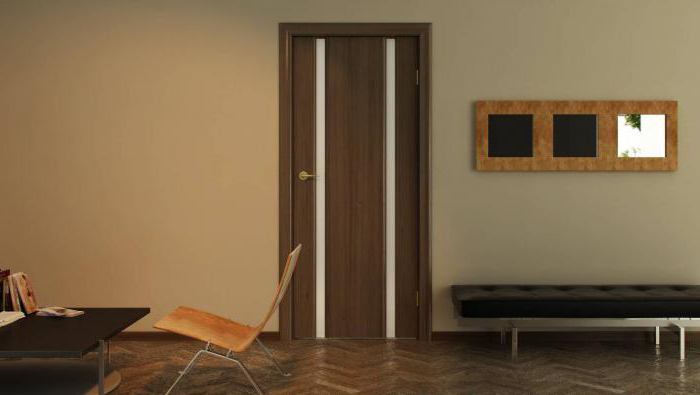
Veneer production
Veneered doors - what is it? In order to fully answer this question, it is necessary to highlight some production features. The production process of natural veneer involves the use of several basic techniques:
- Planing - the main advantage of this method is the preservation of the natural beauty of the valuable wood fibers, the thickness of the material in this case does not exceed 0.5 cm.
- Peeling - the procedure for removing chips in a spiral, the layer thickness is up to 1 cm.
- Cut "sawn lamella" - this is how this method of obtaining veneer is called. The production process involves sawing logs into the thinnest (up to 1 cm) fibers. This is the most expensive veneer, which is practically not found in mass production, used only as exclusive interior items.
What's new?
More recently, the revolutionary fine-line technology has been used for the production of veneer. It allows you to use artificially grown tree species in the shortest possible time. The peeled fibers are then glued into large slabs, after which they are cut at a certain angle. Such veneer conveys the structure of wood fibers as naturally and naturally as possible, being 100% natural.
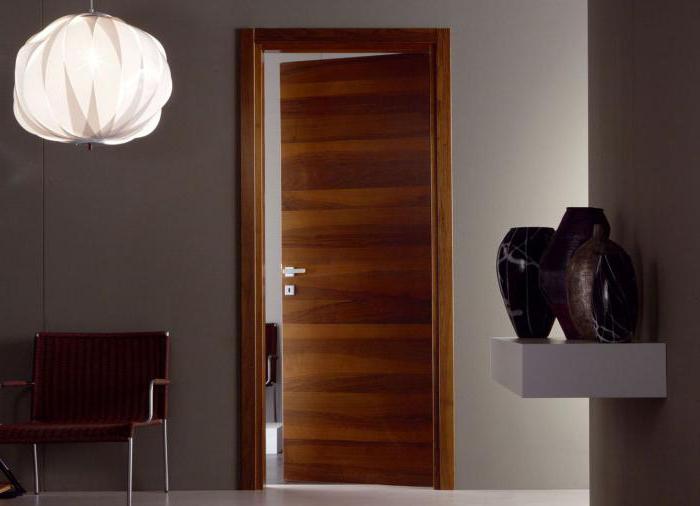
For processing into veneer, both whole logs and small pieces are currently used, which makes it possible to save and conserve natural resources to the maximum, making products more affordable in terms of cost.
Artificial veneer, represented by multilayer plastic, is also actively used. It still imitates the pattern of natural wood, but at the same time gives the doors high mechanical characteristics. But upon a detailed examination of the doors, the difference between natural and artificial veneer is obvious even to the layman.
Design features
Suppose you opted for veneered doors. What it is? Structurally, they are a wooden frame sheathed with MDF sheets. By the way, for the manufacture of the frame, less expensive tree species, such as alder or pine, are most often used to reduce the cost of production and make it more affordable.
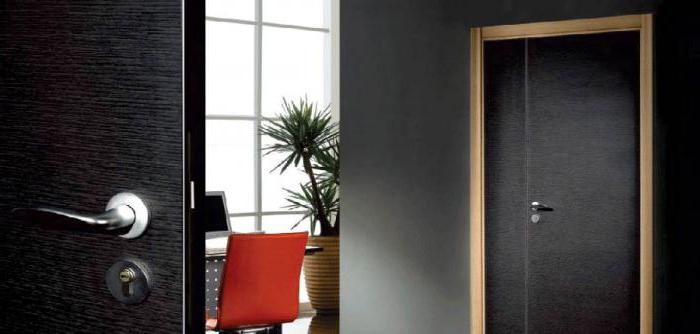
The basis of the future door is made in the way just mentioned, on top of this workpiece, the same veneer is applied in a thin layer by hot pressing, giving an exceptional appearance to each product. The back and end sides of the door leaf are also pressed with veneer, which makes it possible to achieve the integrity of the coating and an exceptional appearance. After veneering, the door leaves are covered with several layers of heavy-duty varnish, which gives the doors a complete look.
Advantages
Veneered doors: what is it? What benefits do they have? If you have chosen them, it does not hurt to know in advance about the strengths. Judging by the reviews, this is:
- strength and durability - these properties are provided by the use of natural wood in the production process;
- ample opportunities for design experiments;
- spectacular appearance;
- full visual compliance with solid wood doors, while the cost is more affordable compared to them;
- excellent indicators of heat and sound insulation;
- relatively light weight and easy installation;
- natural, environmentally friendly materials, which allows the use of doors even in rooms that have special requirements.
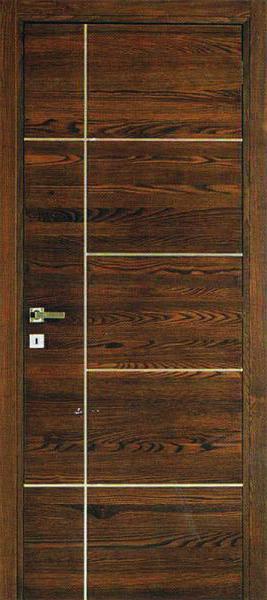
disadvantages
If you choose veneered doors, reviews about them will be a good informative base. So, those who have already installed them at home, highlight some of the shortcomings. These include difficulties in choosing a set of doors - the structure of the fibers will never be identical, you will have to come to terms with this.
Secrets of choice
Finding good veneered doors on the market is not as easy as it seems at first glance. The variety of manufacturers, a rich color palette - this is what brings doubt and confusion to buyers, especially inexperienced ones. Most often, in the selection process, we focus on the appearance, colors that veneered doors are presented with: walnut, oak, ash, maple, cherry - there are many options.
But we propose to focus on other aspects, because the service life of the door depends on this:
- Manufacturer - trust a proven and experienced manufacturer, do not choose a handicraft. Be sure to request a certificate, which will confirm the quality and reliability of the door you are purchasing.
- The pattern and structure of the fibers - carefully inspect the door from all sides. Natural veneer is never repeated in the pattern. If you notice a repetition, this is a fake or artificial veneer, which should be presented at a reduced price. A vague, inaccurate pattern indicates the use of low quality wood.
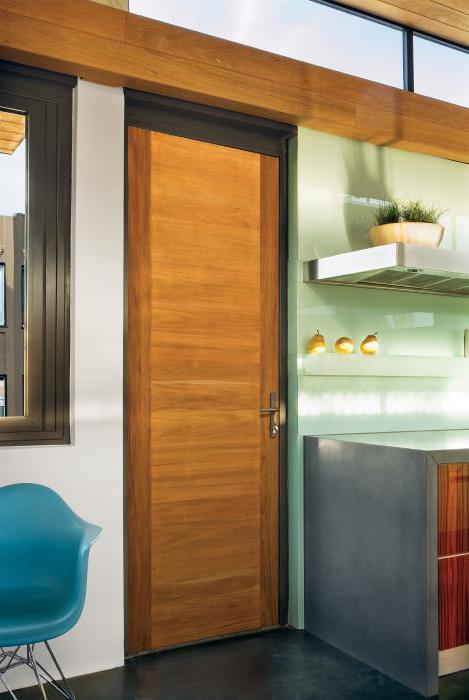
- Defects - be sure to inspect the door panels under the light for scratches, cracks and other small defects invisible to the naked eye - the surface of the doors should be perfectly even and smooth.
- Smell - the presence of a sharp chemical smell indicates the use of low-quality paintwork material for the manufacture of veneered interior doors. Few people know that low-quality varnish can cause an allergic reaction, so you should be extremely careful.
- End - in this case, it is worth considering not the colors of the veneered door, but the quality of the finish of the end. If the veneer even slightly moves away from the canvas, you have a low-quality product.
- Form - the door leaf must have a strictly regular geometric shape, the maximum allowable deviation is 1 mm. If the error is greater, it is better to refuse to buy such a door.
- Glass - if there are glass inserts in the door you have chosen, you must carefully examine them as well. Glass must be of high quality and securely fixed.
- Durability - shake the door well: no extraneous sounds, rattling should appear.
And of course, carefully check the dimensions of the door and your opening for compliance, because in case of an error, you will not be able to fit the veneered door in size.
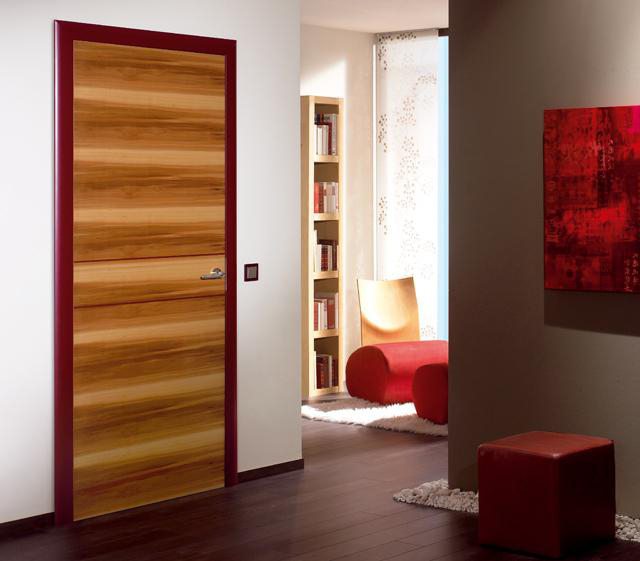
Summing up
We tried to find the answer to the question: veneered doors - what is it? We studied all the main characteristics and properties. Now we can sum up. Veneered doors are endowed with a number of advantages, which will significantly distinguish them from the background of their closest competitors. Such a door will be an excellent option for those who have started repairs, but are limited in budget, why they cannot afford a more expensive purchase, for example, solid wood doors. Moreover, if you do not understand anything about the installation of interior doors, it is better to entrust the work to professionals, because the slightest mistake can lead to deformation and subsequent breakage of the canvas.
Today you can find veneered doors in any major hardware store. Their price, first of all, depends on the type of veneer used and the manufacturer and ranges from 2500 to 9000 rubles. Approaching the choice wisely, you will save yourself from mistakes and give preference to exactly those copies that will serve you for more than a dozen years and become a full-fledged decoration of the interior, no matter what style it is decorated in.
